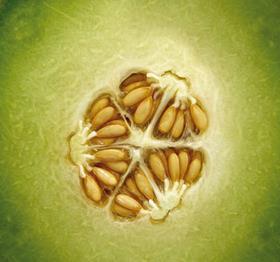
Everyone has heard the old jibe that tomatoes don’t taste the way they used to. It’s almost a default comment by consumer journalists and even the general public to lament the fact that things were better in the past, but that view is looking increasingly dated if ongoing work by seed breeders is anything to go by.
There has been a shift in thinking that has seen the emphasis switch from a focus on what growers want to what consumers want, according to David Rogers, UK sales director at Tozer Seeds. Beyond much needed traits like longer shelf life and disease resistance, the call for great taste has never been higher.
Citing the example of kale, Rogers says that in some areas of breeding there is a definite shift towards “more consumer friendly” products. Tozer has even gone as far as renaming its sprout-kale hybrid Flower Sprout as Kalette to resonate more with shoppers around the world. “When it was first developed we could see the potential of the product as healthy, but also very convenient and versatile. We’ve pushed on with kale breeding, and we’ve now got kale types which taste better and are easier to use.” The company has another new kale launch in the pipeline for later this year, underlining the continued potential of this vogue product.
Kelly Northcroft, chain manager for Rijk Zwaan UK, agrees the marketplace nowadays is demanding a combination of characteristics for the benefit of all. “Both the traits usually associated with consumer demands, such as flavour and shelf life, and those traits associated with the grower, such as yield and ease of harvesting, remain important in the development of new seed varieties,” she says. “Without the grower we won’t have anything to offer the consumer and without the retailer the product will never be sold.”
Key priorities for new varietal development include disease resistance, maximising yields and also consumer expectations such as taste, flavour and shelf life, she adds.
Certainly there’s a great deal going on in terms of new product development right now. “During the past two years we have seen renewed appetite for real variety innovation and while plant breeders cannot turn on innovation as quickly as retail trends change, it does provide the moment to launch and promote new varieties which may not yet have found their chance to appear on retail shelves,” says Dave Samuels, product manager for EMEA at Sakata.
The challenge for breeders is to create these new products at a time of ever more variable weather conditions, which in turn can lead to greater incidence of pest and disease. Clause UK, which focuses on maincrop veg varieties such as brassicas, carrots and onions, reports that the season that is about to end has been particularly problematic with severe interruptions in maturity and product supply. “Critical in these conditions is maintaining hybrids that keep producing good curd quality under such weather changes,” explains the company’s market development manager Jeroen Iprenburg. “At the same time we are broadening the assortment to spread the risk of adverse weather conditions. A better presentation of the product is achieved by increased resistance to foliar diseases, resulting in cleaner crops and a more presentable product in the shops.”
With growing interest in fruit and vegetables among consumers, and taste of paramount importance, seed companies are all looking for the next big thing that could send sales through the roof.
The IPP conundrum
One of the hot topics in the seed trade at the moment is whether intellectual property protection (IPP) is a necessity or acts as a barrier to innovation.
The British Society of Plant Breeders (BSPB) says that today’s fresh products are more efficient, tastier and less prone to spoilage and wastage, but this comes at a huge cost in terms of expense and hours.
It insists that plant variety rights, which give companies a time-limited monopoly in much the same way as copyright does with music or books, are essential for breeders to recoup development costs and enable them to reinvest.
BSPB chief executive Penny Maplestone points out that other companies can still use protected plant material as a parent in their own breeding programme, building on its qualities to make it better – much like open-source IP, to make a comparison to the digital world.
But critics argue that the system is too detrimental for smaller seed companies, who do not have the millions needed to fund technical innovation themselves and have traditionally used others’ initial work to develop products of benefit to growers and the wider produce industry.
Three to watch
Calebrini
Clause UK has developed a new range of stemmed broccoli. Calebrini works on the concept that more than one different hybrid is used to secure a year-round cauliflower supply. The product is described as eating like asparagus, and features improvements in both yield and shelf life.
Galkia
A new Galia melon from Bayer has an innovative “ripeness indicator” as its skin turns from green to yellow at the best time for harvesting.
Available commercially under the Galkia brand, it is grown in Almeria, Murcia and La Mancha in Spain, with production spanning the summer supply season from early June to the end of September. Bayer said it also has varietal trials in the southern hemisphere to expand availability.
Fire Fresh f1
Sakata UK has been working on improving disease resistance in its babyleaf spinach and Swiss chard products, with its Fire Fresh F1 featuring resistance to both downy mildew and cercospora. The company says it has received a very positive reception in the marketplace and sees it as a key variety for growers to ensure processors and retailers have availability of chard with clean leaves.



